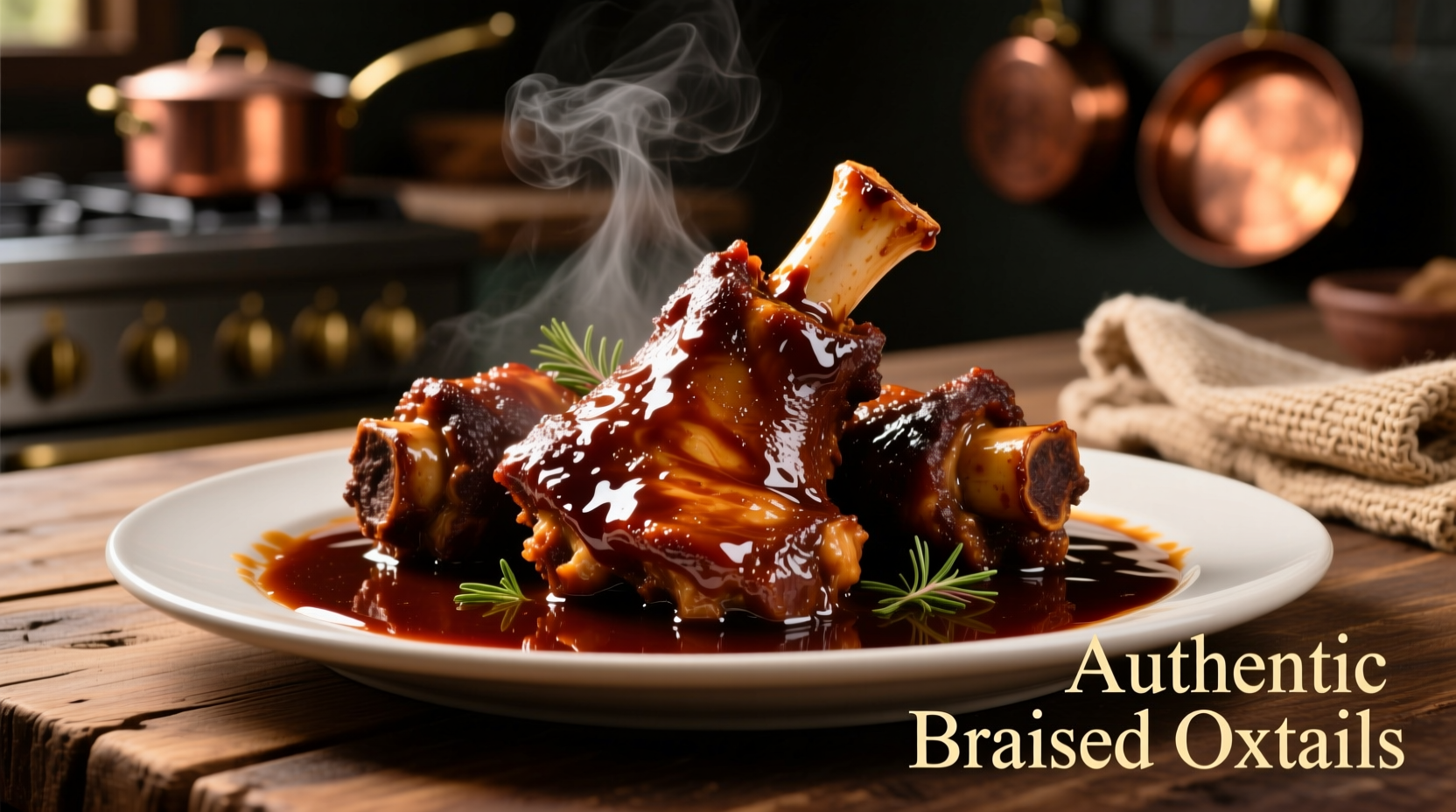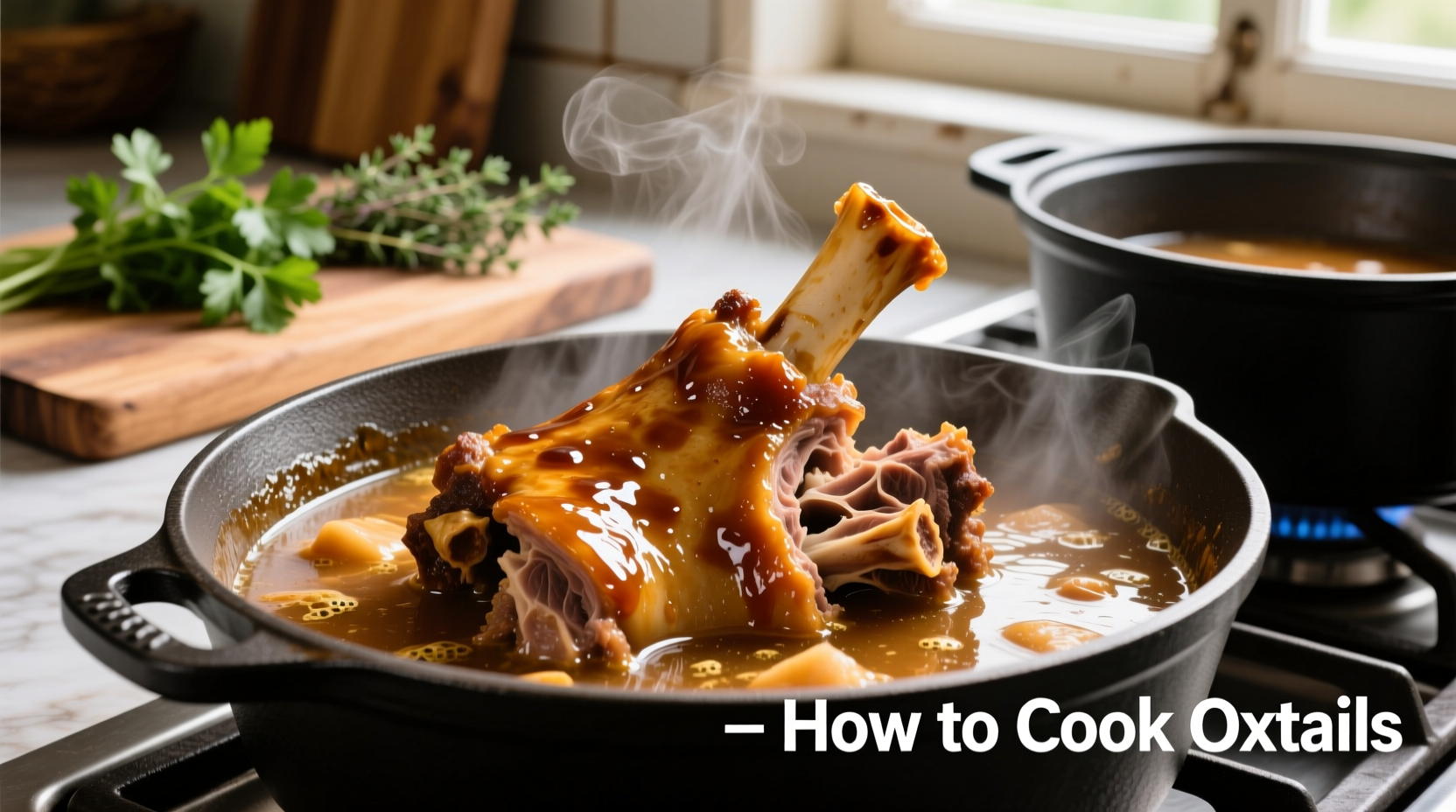Nothing compares to the rich, gelatinous texture and deep beefy flavor of properly cooked oxtails. This often-overlooked cut, taken from the tail of cattle, transforms into an extraordinary dish when prepared correctly. While many home cooks shy away from oxtails due to their perceived complexity, this guide reveals how straightforward it is to create restaurant-quality results in your own kitchen.
Understanding Oxtails: More Than Just Meat
Oxtails were historically considered a butcher's "waste" product until culinary traditions around the world discovered their incredible potential. These cross-cut sections of cattle tail contain bone marrow, connective tissue, and meat that, when slow-cooked, yield an unparalleled depth of flavor and texture. According to USDA nutritional data, oxtails provide 21.7g of protein per 3-ounce serving along with essential nutrients like iron and zinc.
| Cooking Method | Time Required | Texture Result | Flavor Development |
|---|---|---|---|
| Traditional Braise | 3-4 hours | Fall-off-the-bone tender | Deep, complex |
| Slow Cooker | 8-10 hours | Extremely tender | Mellow, integrated |
| Pressure Cooker | 60-75 minutes | Firm but tender | Concentrated |
Essential Equipment Checklist
Before you begin, gather these kitchen essentials:
- Heavy-bottomed Dutch oven (5-7 quart capacity)
- Sharp chef's knife for trimming
- Tongs for handling meat
- Meat thermometer (critical for food safety)
- Slotted spoon for fat removal
Step-by-Step Oxtail Preparation Process
Proper preparation makes all the difference in your final dish. Follow these professional techniques:
1. Selecting Quality Oxtails
Look for oxtails with:
- Deep red meat (avoid grayish tones)
- Plenty of marbling throughout
- Firm texture that springs back when pressed
- Evenly cut sections (about 2-3 inches thick)
2. Proper Trimming Technique
Remove excess fat and silver skin:
- Chill oxtails in freezer for 15 minutes to firm up fat
- Use a sharp boning knife to carefully remove thick fat deposits
- Leave a thin layer of fat for flavor and moisture
- Rinse under cold water and pat completely dry
3. The Critical Searing Step
"Searing creates the flavor foundation for your entire dish," explains Maya Gonzalez, Latin American cuisine specialist. "Don't rush this step—proper browning develops complex Maillard reactions that can't be replicated later."
- Heat 2 tablespoons of high-smoke point oil (avocado or grapeseed) in your Dutch oven
- Pat oxtails completely dry with paper towels
- Sear in batches without crowding (about 3-4 minutes per side)
- Remove when deeply browned and set aside
4. Building Flavor Layers
After searing, create your flavor base:
- Reduce heat to medium and add diced onions, carrots, and celery
- Cook until vegetables are softened (about 8 minutes)
- Add 3 minced garlic cloves and cook for 1 minute until fragrant
- Stir in 2 tablespoons tomato paste and cook for 2 minutes
- Scrape bottom of pot to incorporate flavorful browned bits
5. The Perfect Braising Liquid Ratio
Professional chefs use a specific ratio for optimal results:
- 1 part full-bodied red wine (like Cabernet Sauvignon)
- 2 parts quality beef stock (homemade preferred)
- 1/4 part tomato product (paste or crushed tomatoes)
- Aromatic herbs: 2 bay leaves, 4 sprigs thyme, 1 rosemary sprig
- Seasoning: 1 teaspoon black pepper, 2 teaspoons kosher salt
6. Cooking to Perfection
Return oxtails to the pot, ensuring liquid covers about 2/3 of the meat. Bring to a gentle simmer, then:
- Cover with tight-fitting lid
- Reduce heat to maintain a bare simmer (200-225°F)
- Cook for 3-4 hours until meat pulls away from bone with light pressure
- Check periodically and rotate oxtails for even cooking
According to food safety guidelines from the USDA Food Safety and Inspection Service, cooked beef should reach an internal temperature of 145°F with a 3-minute rest time. However, for oxtails specifically, you'll need to cook them much longer—until the internal temperature reaches 195-205°F—to properly break down the connective tissues.

Cultural Variations and Serving Suggestions
Oxtails feature prominently in culinary traditions worldwide, each with distinctive preparation methods:
- Jamaican style: Features allspice, Scotch bonnet peppers, and thyme
- Korean ssam: Simmered with soy sauce, garlic, and Asian pears
- Italian coda alla vaccinara: Tomato-based with celery and anchovies
- Mexican guisado de rabo: Rich mole-inspired sauce with dried chilies
Finishing Touches for Restaurant-Quality Results
Elevate your dish with these professional finishing techniques:
- Skim excess fat: Chill cooked oxtails overnight, then remove solidified fat from surface
- Reduce sauce: Simmer uncovered for 15-20 minutes to concentrate flavors
- Add brightness: Finish with fresh herbs or a splash of vinegar
- Adjust seasoning: Taste and adjust salt just before serving
Common Mistakes to Avoid
Even experienced cooks make these oxtail preparation errors:
- Rushing the sear: Inadequate browning results in flat flavor
- Boiling instead of simmering: Causes meat to become tough rather than tender
- Underseasoning: Oxtails require more salt than typical cuts due to their size
- Serving too soon: Needs proper resting time (15-20 minutes) for juices to redistribute
Storage and Reheating Guidelines
Oxtails actually improve with time as flavors meld. Follow these storage recommendations:
- Cool completely before refrigerating (within 2 hours of cooking)
- Store in airtight container with sauce for up to 4 days
- Freeze for up to 3 months in portion-sized containers
- Reheat gently on stove (not microwave) to preserve texture











 浙公网安备
33010002000092号
浙公网安备
33010002000092号 浙B2-20120091-4
浙B2-20120091-4